The 5.56×45 is the king of American rifle cartridges. We doubt a new round will ever come along to dethrone it – it works great, and too many millions of AR-15s are already chambered for 5.56.
But plenty of alternative cartridges have been introduced for the AR-15 platform in recent years. In order to earn some share of the ammo market, these rounds have to offer something different enough from the 5.56 to grab shooters’ attention.
The 6.5 Grendel is one of these newer AR-15 rounds. It certainly looks different enough from 5.56 ammo with its lower shoulder and longer bullet, but what exactly does it do differently that merits its popularity? We’re going to compare the two rounds’ ballistics, energy, and recoil to see if there’s a clear winner to the 5.56×45 vs. 6.5 Grendel debate, or if they each offer their own distinct advantages.
Cartridge Dimensions
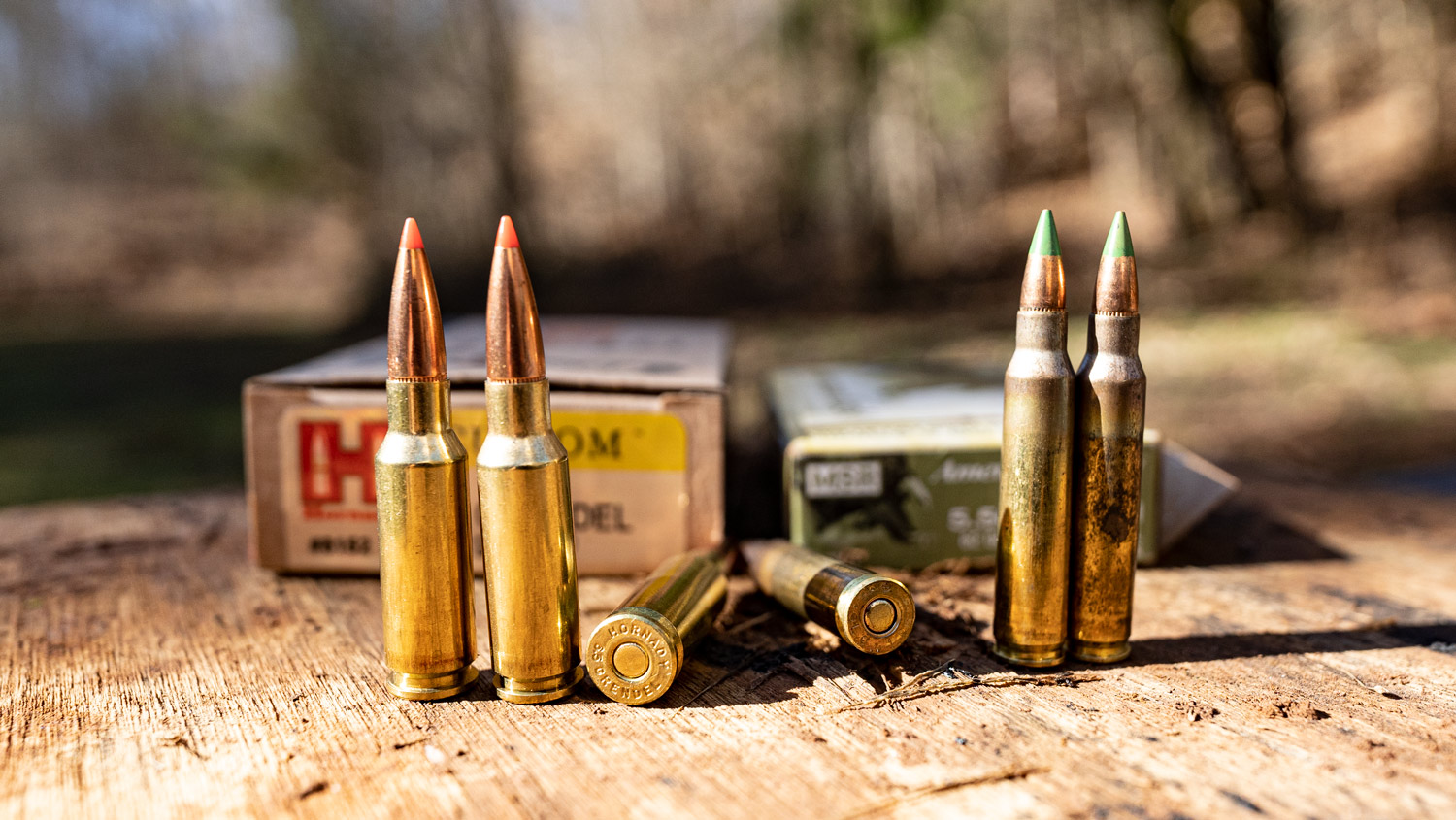
| 5.56x45 | 6.5 Grendel | |
|---|---|---|
| Parent case | 223 Rem | 220 Russian |
| Case type | Rimless, bottleneck | Rimless, bottleneck |
| Bullet diameter | 0.224 in | 0.264 in |
| Neck diameter | 0.253 in | 0.293 in |
| Shoulder diameter | 0.354 in | 0.428 in |
| Base diameter | 0.377 in | 0.439 in |
| Rim diameter | 0.378 in | 0.440 in |
| Case length | 1.760 in | 1.520 in |
| Overall length | 2.260 in | 2.260 in |
| Case capacity | 28.5 gr H2O | 35.0 gr H2O |
| Maximum pressure | 62,366 psi | 52,000 psi |
Right away you will notice that the 5.56 and 6.5 Grendel have different diameter bullets: 0.224” vs. 0.264”. We can expect this disparity to impact the rounds’ in-flight ballistics.
The 6.5 Grendel’s larger case has capacity for about 22 percent more propellant. Its wider bullet often weighs over twice as much, though. This means we should still expect it to deliver a slower muzzle velocity.
As a side note, it is interesting to note that the two rounds share the same exact length. Even though 5.56 magazines will hold 6.5 Grendel cartridges, they don’t work reliably enough to be considered compatible with 6.5 Grendel lower receivers. As such you’ll still need a dedicated 6.5 Grendel magazine.
6.5 Grendel vs. 5.56 Ballistics
Muzzle Velocity
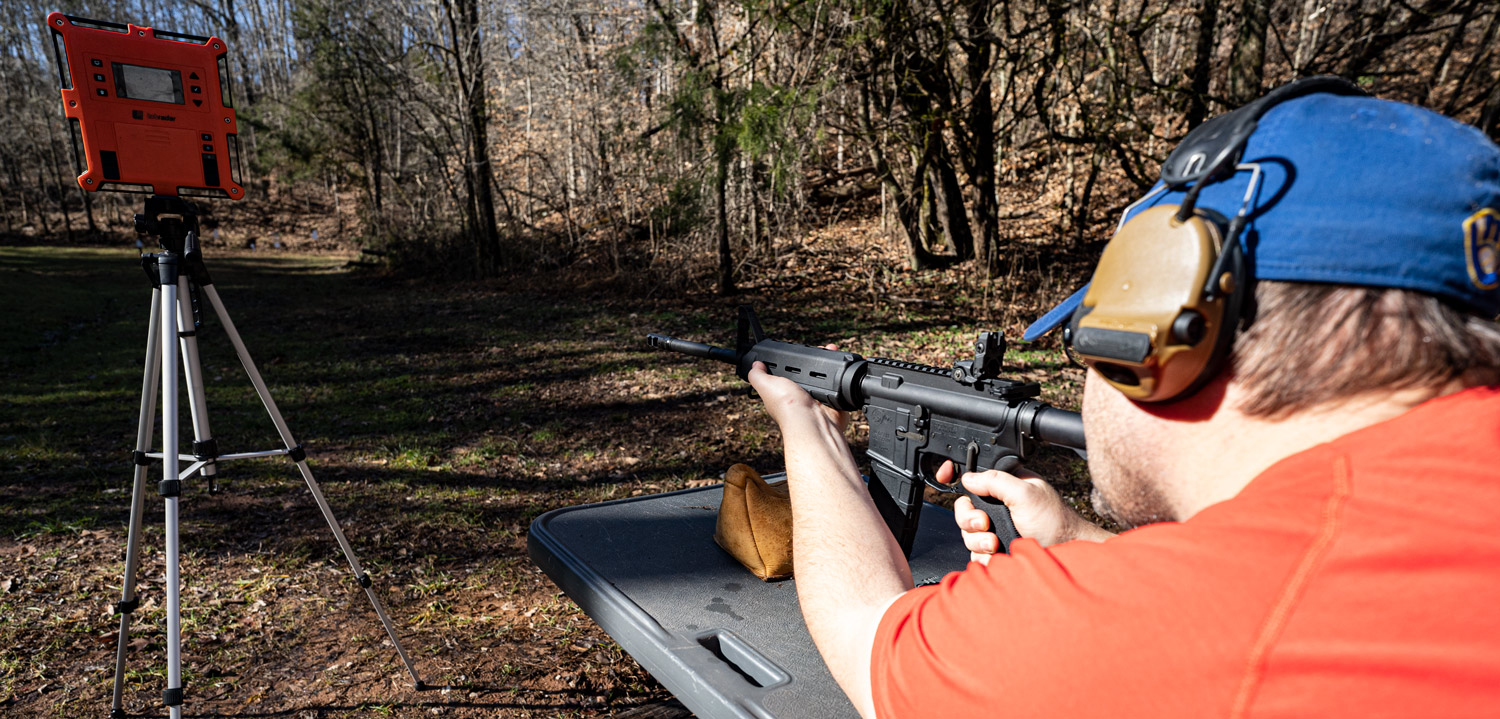
| 5.56 Fed. American Eagle 55 Gr | 6.5 Grendel Hornady Frontier 123 Gr FMJ | 5.56 Hornady Superformance Match 75 Gr | 6.5 Grendel - Hornady BLACK 123 Gr | 5.56 Federal Tactical Bonded 62 Gr | 6.5 Grendel Federal Fusion 120 Gr | |
|---|---|---|---|---|---|---|
| Muzzle velocity (fps) | 3165 | 2580 | 2910 | 2580 | 3050 | 2600 |
| Velocity @ 100 yds | 2777 | 2377 | 2674 | 2412 | 2637 | 2349 |
| Velocity @ 200 yds | 2421 | 2183 | 2451 | 2251 | 2260 | 2113 |
| Velocity @ 300 yds | 2092 | 1998 | 2238 | 2096 | 1915 | 1891 |
| Velocity @ 400 yds | 1791 | 1824 | 2036 | 1948 | 1607 | 1685 |
| Velocity @ 500 yds | 1523 | 1660 | 1845 | 1806 | 1345 | 1498 |
| Velocity @ 600 yds | 1297 | 1509 | 1667 | 1672 | 1147 | 1333 |
| Velocity @ 700 yds | 1128 | 1372 | 1504 | 1546 | 1020 | 1197 |
| Velocity @ 800 yds | 1017 | 1253 | 1358 | 1429 | 937 | 1093 |
| Velocity @ 900 yds | 941 | 1155 | 1232 | 1324 | 873 | 1018 |
| Velocity @ 1000 yds | 882 | 1078 | 1131 | 1230 | 820 | 961 |
It is interesting to note that the 6.5 Grendel has a slower muzzle velocity than the 5.56. This means you will have to arc its trajectory more in order to hit your target. However, because the 6.5 Grendel bullet is significantly heavier and has a higher ballistic coefficient (a measure of ability to overcome air resistance in flight, where a higher number is better), it is able to retain more of its initial velocity at farther distances downrange. The 6.5 Grendel often offers higher velocities than the 5.56 beyond 400 yards in spite of its slower start.
Trajectory
| 5.56 Fed. American Eagle 55 Gr | 6.5 Grendel Hornady Frontier 123 Gr FMJ | 5.56 Hornady Superformance Match 75 Gr | 6.5 Grendel - Hornady BLACK 123 Gr | 5.56 Federal Tactical Bonded 62 Gr | 6.5 Grendel Federal Fusion 120 Gr | |
|---|---|---|---|---|---|---|
| Elevation @ 100 yds | 7.29 | 9.37 | 7.19 | 8.81 | 8.52 | 10 |
| Elevation @ 200 yds | 11.53 | 14.05 | 10.99 | 13.11 | 13.48 | 15.14 |
| Elevation @ 300 yds | 9.78 | 11.41 | 8.98 | 10.53 | 11.56 | 12.47 |
| Elevation @ 400 yds | 0.02 | 0.03 | 0 | 0.03 | 0.05 | 0.02 |
| Elevation @ 500 yds | -20.68 | -21.83 | -17.39 | -19.65 | -25.08 | -24.73 |
| Elevation @ 600 yds | -56.5 | -56.35 | -45.03 | -50.02 | -69.57 | -65.03 |
| Elevation @ 700 yds | -113.06 | -106.18 | -85.21 | -92.86 | -140.47 | -124.95 |
| Elevation @ 800 yds | -196.92 | -174.52 | -140.82 | -150.27 | -244.89 | -209.15 |
| Elevation @ 900 yds | -314.54 | -265.02 | -215.34 | -224.73 | -388.71 | -322.61 |
| Elevation @ 1000 yds | -471.2 | -381.79 | -312.77 | -319.06 | -578.38 | -469.4 |
| G1 ballistic coefficient | 0.25 | 0.427 | 0.395 | 0.52 | 0.228 | 0.346 |
| G7 ballistic coefficient | 0.126 | 0.216 | 0.201 | 0.261 | 0.117 | 0.177 |
Its greater momentum and resistance to wind deflection make the 6.5 Grendel a lot more useful for hitting targets up to 800 yards out. It can even be pushed past 1,000 yards with practice. The 5.56 can hit 1,000 yards too. However, the general consensus is that it’s not really all that effective beyond 300 yards.
Because it offers greater accuracy over longer distances, the 6.5 Grendel is the more sniper-friendly cartridge.
Energy
The amount of energy a bullet can transfer to its target depends entirely on two factors: mass and velocity. The faster or heavier a bullet becomes, the more damage it’s inclined to inflict on impact.
The 6.5 Grendel bullet spends its first 300 to 400 yards moving slower than the 5.56. It often weighs more than twice as much, however, so it carries superior energy at all ranges.
| 5.56 Fed. American Eagle 55 Gr | 6.5 Grendel Hornady Frontier 123 Gr FMJ | 5.56 Hornady Superformance Match 75 Gr | 6.5 Grendel - Hornady BLACK 123 Gr | 5.56 Federal Tactical Bonded 62 Gr | 6.5 Grendel Federal Fusion 120 Gr | |
|---|---|---|---|---|---|---|
| Muzzle energy (ft lbs) | 1224 | 1818 | 1410 | 1818 | 1281 | 1802 |
| Energy @ 100 yds | 942 | 1543 | 1191 | 1590 | 957 | 1471 |
| Energy @ 200 yds | 716 | 1302 | 1001 | 1385 | 703 | 1190 |
| Energy @ 300 yds | 535 | 1091 | 834 | 1201 | 505 | 953 |
| Energy @ 400 yds | 392 | 908 | 691 | 1036 | 355 | 757 |
| Energy @ 500 yds | 283 | 753 | 567 | 891 | 249 | 598 |
| Energy @ 600 yds | 205 | 622 | 463 | 763 | 181 | 474 |
| Energy @ 700 yds | 155 | 514 | 377 | 653 | 143 | 382 |
| Energy @ 800 yds | 126 | 429 | 307 | 558 | 121 | 318 |
| Energy @ 900 yds | 108 | 364 | 253 | 478 | 105 | 276 |
| Energy @ 1000 yds | 95 | 317 | 213 | 414 | 93 | 246 |
Either cartridge would prove more than adequate for varmint hunting or self-defense. Personal protection generally calls for a minimum foot-pound force of 220 to 300. Although the 5.56 typically dips beneath that threshold by 600 yards, it is highly unlikely that you will have to engage a threat at so great a distance.
The 6.5 Grendel’s greater energy does make it the better choice for deer hunting, though. A foot-pound force of 1,000 or greater is recommended for the ethical hunting of whitetail. The 5.56 can fall beneath this threshold by as short as 100 yards, though the 6.5 Grendel consistently puts 1,000 ft lbs or more energy on target beyond 300 yards – and often farther.
6.5 Grendel vs 5.56: Recoil
The ideal rifle would generate zero recoil energy when fired. The ideal rifle doesn’t exist, so you’re always going to have to put up with at least some kick.
It is impossible to calculate the exact amount of recoil you will actually feel. That is determined in part by your own nervous system, the details of which we don’t have access to.
But we can fairly estimate a cartridge’s recoil energy by weighing four known factors: rifle weight, propellant weight, bullet weight and muzzle velocity. For the purpose of calculating the recoil energy of the six cartridges compared above we’ll assume all 5.56 rounds have 24 grains of propellant and all 6.5 Grendel rounds have 30. We’re also firing 7.5 lb rifles.
| Recoil Energy (ft lbs) | |
|---|---|
| 5.56x45 Federal American Eagle 55gr FMJBT | 3.66 |
| 5.56x45 Hornady Superformance Match 75gr ELD Match | 4.84 |
| 5.56x45 Federal Tactical Bonded 62gr SP | 4.04 |
| 6.5 Grendel Hornady Frontier 123 gr FMJ | 9.24 |
| 6.5 Grendel Hornady BLACK 123 gr ELD Match | 9.24 |
| 6.5 Grendel Federal Fusion 120 gr SP | 9.03 |
While the 6.5 Grendel’s muzzle velocity is slower across the board. Plus, in all cases its significantly heavier bullet is enough to generate more than double the 5.56’s recoil energy.
Neither round’s recoil energy is enough to make an average sized shooter uncomfortable. The 6.5 Grendel’s heavier recoil simply makes rapid, accurate fire more difficult. The 6.5 Grendel’s steeper muzzle rise will increase the amount of time you have to spend restoring your aim following every time you fire. If your goal is to shoot two targets in rapid succession, or put as many bullets into a target as quickly as possible (as you would for self-defense) then the 6.5 Grendel’s heavier recoil will make that goal more difficult.
Availability & Price
The 5.56 beats pretty much every other centerfire rifle cartridge in terms of availability. Alongside the 223 Rem, which a rifle chambered for 5.56 can fire interchangeably, it is the most popular rifle round in America.
The 6.5 Grendel has certainly found a market since its introduction in 2004. You should find plenty of options – just nowhere near as many as you would while shopping for 5.56.
The 5.56 is the cheaper cartridge. There’s a greater market for it, and as the smaller round it demands fewer raw materials for its production. The 6.5 Grendel is not very far behind, though. Russia’s steel-cased 6.5 Grendel ammo costs almost as little as target-grade brass-cased 5.56, and it’s often cheaper than 308 Win.
The 6.5 Grendel isn’t so niche that building an AR-15 chambered for it is significantly more expensive, either. All in all, the cost difference between the two rounds isn’t great enough to become the determining factor as to which you should prefer.
Grendel vs. 5.56×45: The Takeaway
The 5.56 has a flatter trajectory than the 6.5 Grendel. But remember, its long-distance performance can’t compare to its competitors heavier, more ballistically efficient bullet. The 6.5 Grendel is the better long-range round.
The 6.5 Grendel delivers far more energy to its target at all ranges. Although either cartridge is well equipped for self-defense, the 6.5 Grendel’s better suitability for deer hunting is not up for debate.
The 6.5 Grendel’s superior in-flight and terminal ballistics come at a price: greater recoil energy. You may feel twice as much kick while firing the newer round. The biggest drawback of that is greater difficulty when it comes to rapid fire.
Though many aspects of the 5.56’s performance are inferior to those of the 6.5 Grendel, it is by no means a poor cartridge. So, in this debate between 6.5 Grendel vs 5.56, if you were to pick only one round to use exclusively, we would have to recommend America’s longtime favorite.
But if you’re interested in getting better long-range performance out of the AR-15 platform, the 6.5 Grendel is a great way to go!


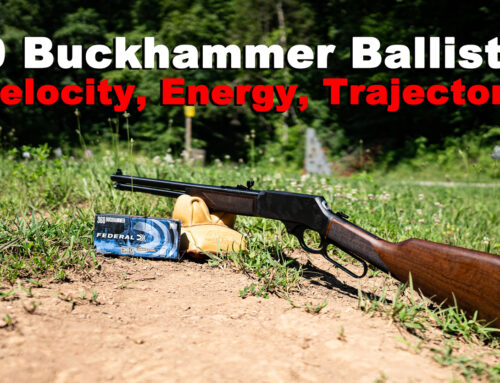
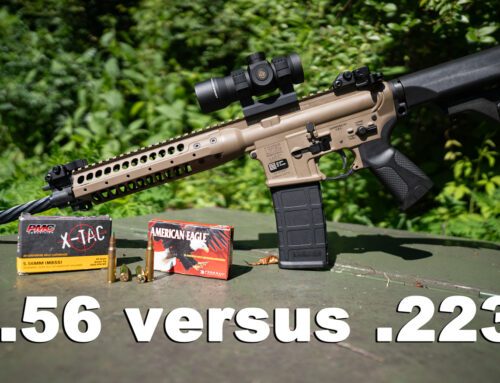
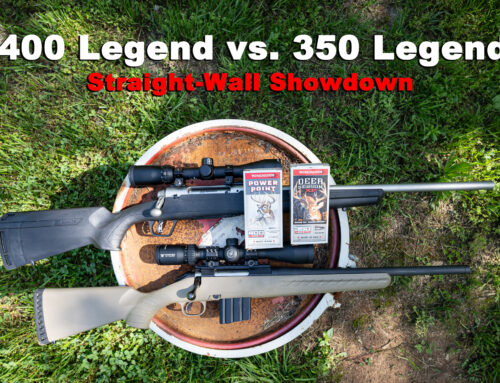
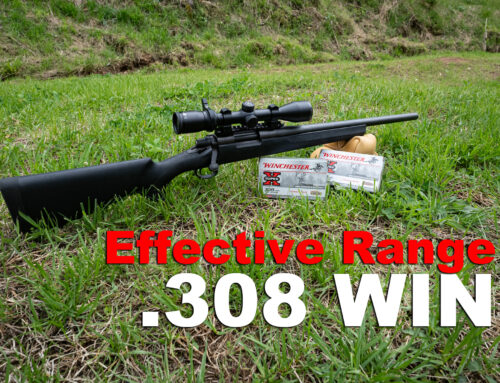
Leave A Comment